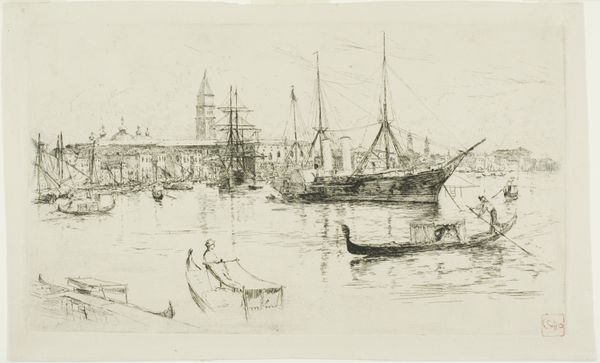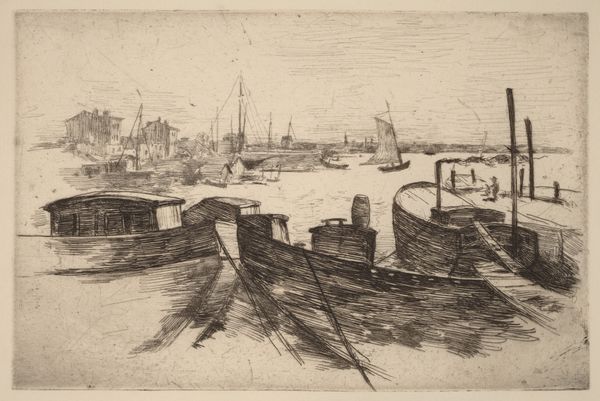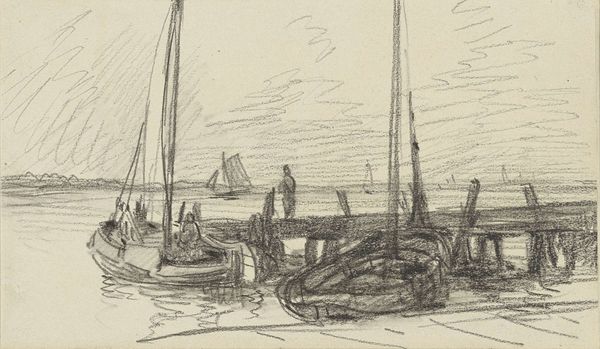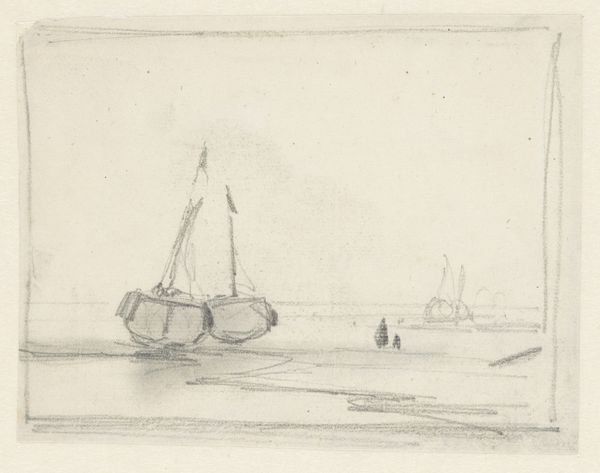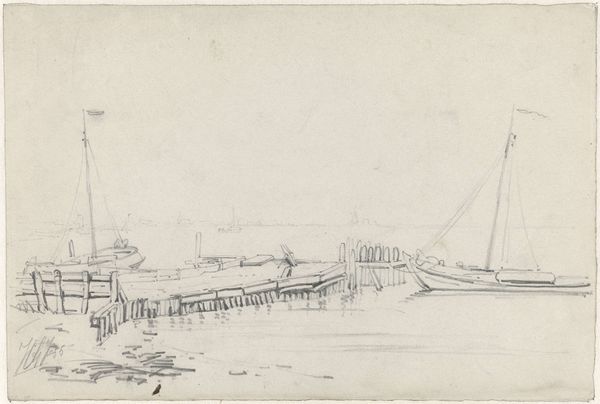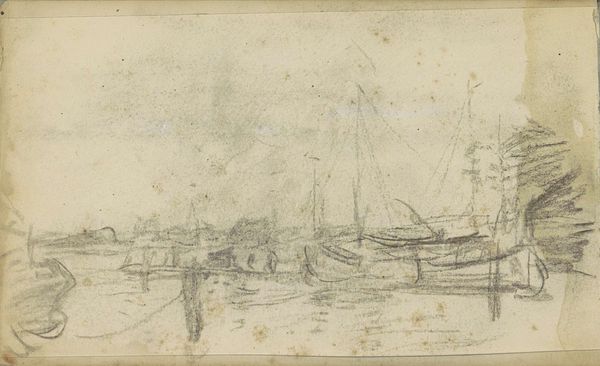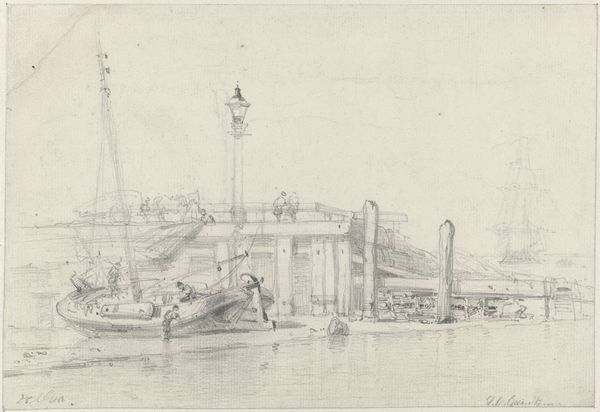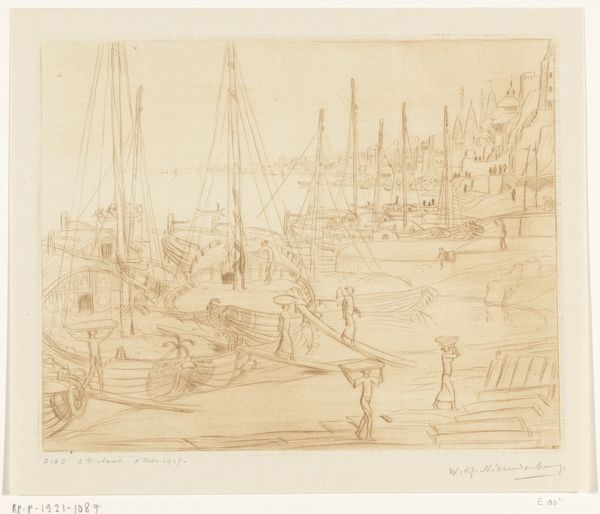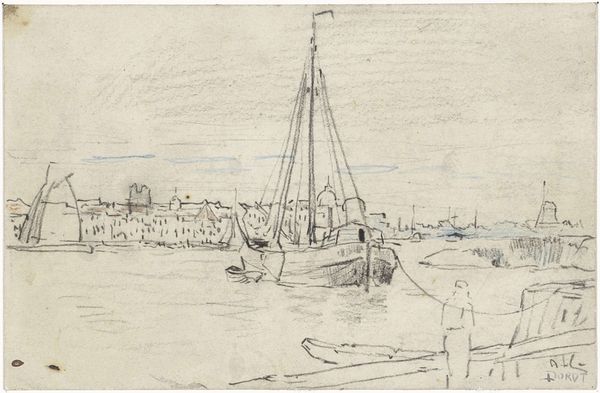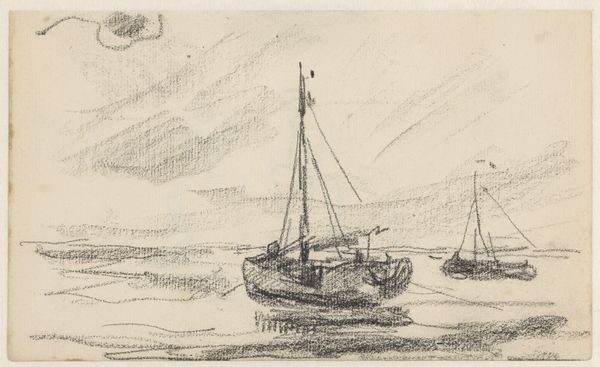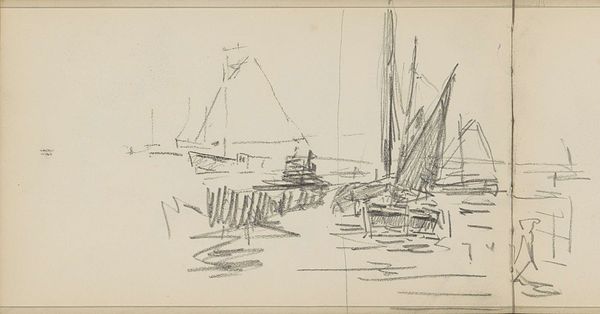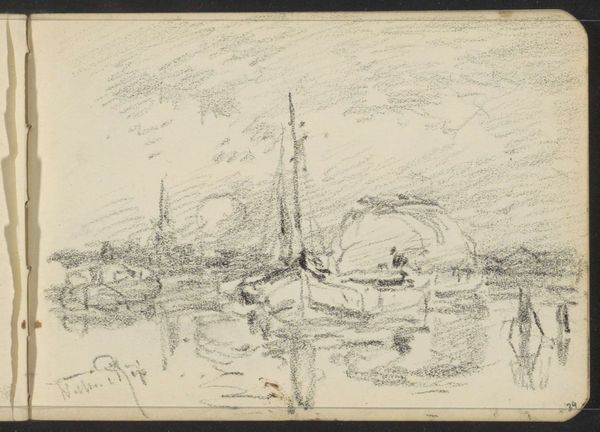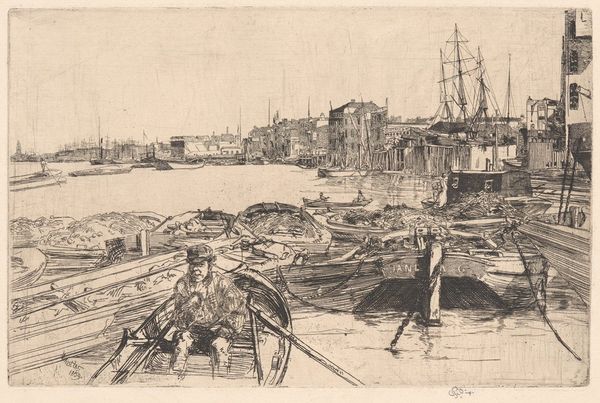
drawing, pencil
#
drawing
#
dutch-golden-age
#
landscape
#
pencil
#
cityscape
#
realism
Copyright: Rijks Museum: Open Domain
Curator: Bramine Hubrecht's pencil drawing, "Zeilschepen op een kanaal in Amsterdam"—"Sailboats on a Canal in Amsterdam"—offers a glimpse into the city's bustling waterways sometime between 1865 and 1913. It's currently held here at the Rijksmuseum. Editor: The initial impression is almost dreamlike. There's a hazy quality to the scene, like a memory being sketched from a distance. The grayscale palette emphasizes a sort of ethereal, timeless atmosphere. Curator: It’s quite evocative, isn't it? Notice how Hubrecht captures the essence of Amsterdam's maritime life. The sailboats are central figures, undoubtedly connecting the Dutch Republic with their crucial role in global trade. There’s even what appears to be a small rowing boat occupied with what seem to be merchantile tradesmen who could also be a young boy with his father, on his first time working and watching what is father is doing to pick up skills and tricks of the trade. This symbolizes passing down of trade skills and their livelihood in their culture. Editor: Precisely. And look at the mark-making – the density of the pencil lines indicating darker tones and textures. We get a sense of the material realities of these vessels – the wood, the rope, even the potential tar used to seal the hulls. This attention to the basic stuff reveals the amount of manual labor to which ships had to undertake to remain usable as their life cycles. Curator: And consider the cityscape fading into the background. Hubrecht reduces the architectural elements to almost spectral forms, further emphasizing the prominence of seafaring, as if to further give visual reminder the importance the tradesman's work for Dutch Society at large. We see a prominent church in the back right indicating God's protection as sailors went on journeys for trade. Editor: It does beg the question: was Hubrecht more interested in the image of the ship-worker or in creating this realistic portrayal? Is this study more about representing labor or evoking this scene? It's that ambiguity, for me, that makes this piece so compelling, even within the historical Dutch landscape genre. Curator: It reminds me that the symbolism can live both in grand cultural narratives and in the most ordinary realities of materials, labour and lives. It also inspires my sense of historical and social curiosity for maritime history! Editor: Indeed. By foregrounding the physicality of the scene and tools while emphasizing the manual labor involved, this drawing transforms beyond being just an image, which makes me also realize the artist’s work is often invisible, since labor is something you typically see in ports of trading. I do respect that he took initiative of doing his artwork for bringing light to their value and hard work.
Comments
No comments
Be the first to comment and join the conversation on the ultimate creative platform.
